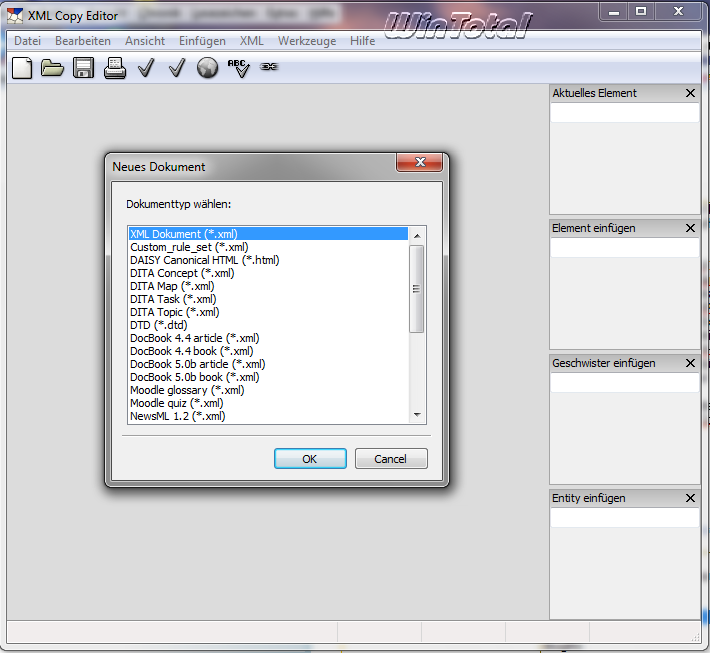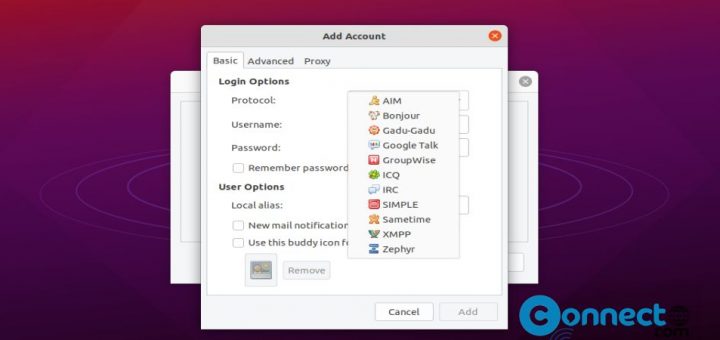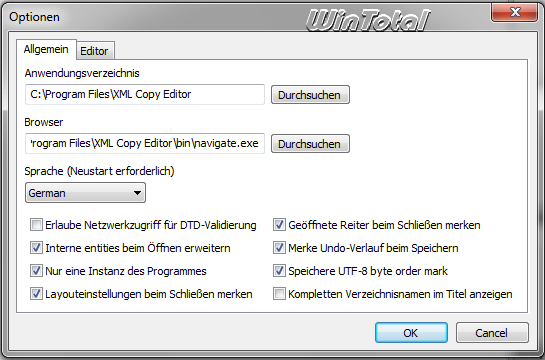


… if the XML data is obtained from a CLOB or VARCHAR value, then the encoding declaration is ignored,īecause these two data types are always encoded in the database character set.The uploaded XLIFF file ends up in a CLOB, which is encoded in the local database character set. Another search in the XML DB documentation yielded the following: After further review, it seems that this scenario repeats itself when the XML file is encoded differently than the database, and the latter is not set to use A元2UTF8. Joel pointed out to me that Google search after your error messages yields many results that are not related to APEX. That is not my reading of the proper XML parser behavior. > So it appears that the APEX importer is interpreting the BOM using the ISO-8859-1 character set and throwing an error that the file is not valid.
#Xliff editor for windows manual#
Is there anything we can do to resolve the issue that doesn't involve adding an additional manual step to the process or the translator changing the tool being used? Or is there something I'm missing that would indicate that a file with the BOM in the first three bytes should not be considered a valid XML file? Obviously, we can work around the problem either by asking our translator to use a different tool or by opening up the files we get back in a hex editor and removing the BOM. So it appears that the APEX importer is interpreting the BOM using the ISO-8859-1 character set and throwing an error that the file is not valid. The third byte of the UTF-8 BOM (0圎F,0xBB,0xBF), if interpreted as an ISO-8859-1, would be the upside down question mark character in the error message. ORA-31011: XML parsing failed ORA-19202: Error occurred in XML processing LPX-00210: expected '<' instead of '¿' Error at line 1 However, when we import the file in APEX, and hit the Apply XLIFF button, we get an error This appears to be a valid way for the tool to indicate the encoding being used though, obviously, the encoding in the header overrides it and the BOM is not the preferred method of specifying the encoding of an XML file. Our translator, however, uses a tool that adds a byte-order mask BOM at the head of the XLIFF file when it saves it in order to identify it as a UTF-8 encoded file. This works perfectly when I use my text editor to enter the (very poor) translations in the file. We are going through the process of generating XLIFF files, sending them to a translator to translate, and then importing the data back in rather than manually editing the translations. Using APEX 3.2, I'm trying to get translations loaded for an application that I'm working on. 1.7K Training / Learning / Certification.165.3K Java EE (Java Enterprise Edition).7.9K Oracle Database Express Edition (XE).3.8K Java and JavaScript in the Database.However, if the translation contains some special XLIFF tags (bpt, ept, it, ph, g, bx, ex, x, sub), we don’t escape between the symbols. |" foo" |& quot foo& quot | |" foo" |'foo'|ĭuring compiling, we escape (convert from rich to raw): ||*Editor*||*Language file*|| Quickstart: Transifex Native and Javascriptĭuring parsing, we unescape (convert from raw to rich): ||*Source file*||*Editor*|| Ordering Translations from TextMaster Using TemplatesĪpproving and Managing Content for TranslationĪmazon Glossary for Machine Translation (MT) Using Translation Memory and Concordance Search Using Zendesk and Context for Files Together The Complete Guide to Adding Context to Strings

#Xliff editor for windows how to#
How To Work With Multiple Branches in a GIT Repository The ultimate guide for managing your tasks in Transifex Having Different Source Content Across LanguagesĪvoiding untranslatable text to be added to TM Getting started as a localization manager.


 0 kommentar(er)
0 kommentar(er)
